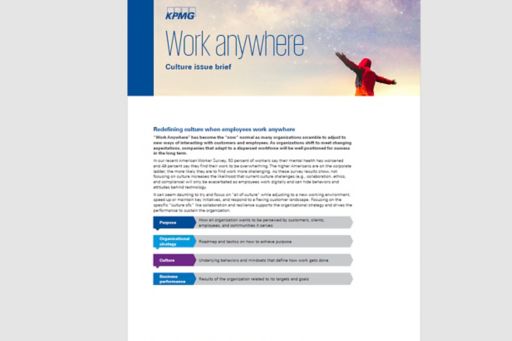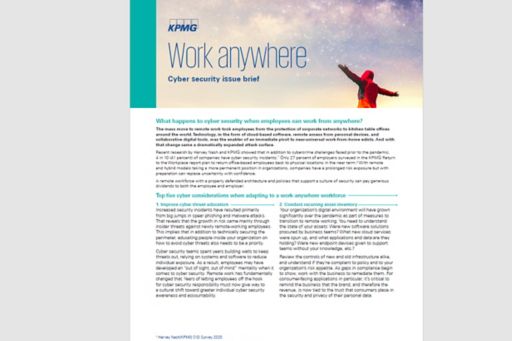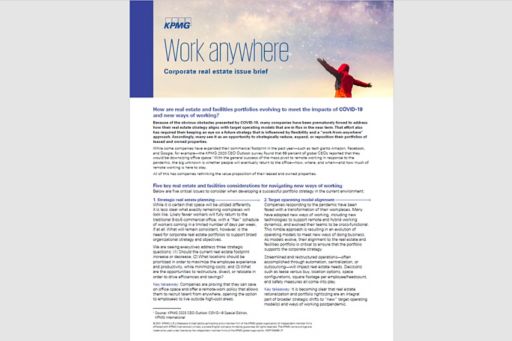Key considerations for creating value and productivity in hyper-virtual environments
As a result of speaking with industry leaders, helping clients, and using our own experience in adapting to an unexpected era of remote working, we uncovered unique issues that have impacted both specific groups within a company as well as the entire enterprise. To help companies continue to respond, adapt, and progress in a remote and digital environment, we have a collection of considerations against those key and unique issues that are challenging how we continue to create value and be productive.
How do we measure productivity when employees can work from anywhere?
A recent KPMG survey showed that 70 percent of American employees reported that their productivity had increased working from home. The reasons for this vary. It could be that time spared from commuting and other work travel led to a more focused and productive virtual environment. Or it could be that working remotely has forced more effective and efficient ways of working. And while a majority of employees report “feeling” more productive, how meaningful is "perceived productivity"?
Redefining culture when employees work anywhere
"Work anywhere" has become the "now" normal as many organizations scramble to adjust to new ways of interacting with customers and employees. As organizations shift to meet changing expectations, companies that adapt to a dispersed workforce will be well positioned for success in the long term.
What are the tax implications when employees can work from anywhere?
For the first time, "Work anywhere" at scale is both achievable and a competitive advantage in the war for talent. "Work anywhere" is now considered permanent in many organizations. A recent KPMG survey showed that 64 percent of American workers want remote work options incorporated into their work environment. Clearly, companies that best adapt to a dispersed workforce will be positioned to succeed over the long term.
What happens to cyber security when employees can work from anywhere?
The mass move to remote work took employees from the protection of corporate networks to kitchen table offices around the world. Technology, in the form of cloud-based software, remote access from personal devices, and collaborative digital tools, was the enabler of an immediate pivot to near-universal work-from-home edicts. And with that change came a dramatically expanded attack surface.
Because of the obvious obstacles presented by COVID-19, many companies have been prematurely forced to address how their real estate strategy aligns with target operating models that are in flux in the near term. That effort also has required their keeping an eye on a future strategy that is influenced by flexibility and "work-from-anywhere" approach. Accordingly, many see it as an opportunity to strategically reduce, expand, or reposition their portfolios of leased and owned properties.
For more information, download the full reports below:
- Productivity issue brief (PDF/0.6MB)
- Culture issue brief (PDF/1.4MB)
- Global mobility issue brief (PDF/0.6MB)
- Cyber security issue brief (PDF/1.4MB)
- Corporate real estate issue brief (PDF/0.6MB)





